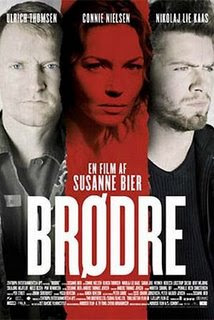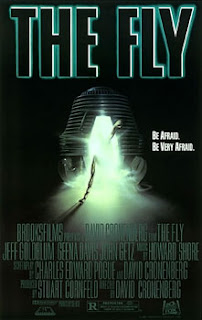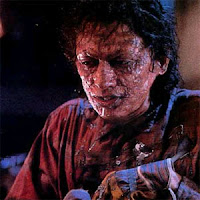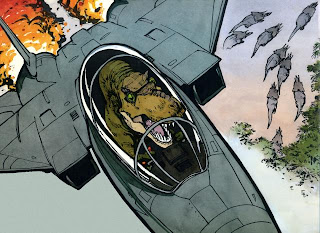
Steven Soderbergh is an interesting filmmaker. Though I can't say he's one I particularly "follow" the way I do, say, the Coen Brothers, Aronofsky, or Nolan, I've seen a good deal of his filmography: sex, lies, and videotape, Kafka, The Limey, Erin Brockovich, Traffic, Ocean's Eleven (and probably one of the sequels too, I don't remember; I can't really tell them apart, honestly), Full Frontal, Solaris, Che. I don't actively seek him out, but I like most of what I've seen from him. His filmography is one that's hard to pin down; it seems all over the map not only in its subject matter, but more generally in a roughly even divide between the mainstream (not meant as a criticism) and the art-house. It seems strange to me that the director of sex, lies, and videotape, Solaris, and Che is the same as the director of Out of Sight, Erin Brockovich, and the Ocean's series. Though he can't exactly write his own meal ticket in Hollywood, I have a hard time believing it's just a matter of making multiplex fare in order to finance his more off-beat passion projects. Or maybe I'm completely wrong. I'll have to ask him the next time we hang out.
This isn't just an example of stream-of-consciousness blog-posting, the above paragraph does have a point. The point is that his most recent film, The Informant! (trailer), seems to have one foot in each of the two halves of Soderbergh's filmography. On the one hand, it's a general-release comedy with one of the biggest stars in Hollywood; on the other, it goes in some rather unexpected places and offers some interesting insights into the human condition.
The Informant! tells the true story—more or less—of Mark Whitacre (Matt Damon), a mild-mannered senior executive at the agribusiness giant Archer Daniels Midland. (The film tells us that we've probably never heard of ADM, but of course I have, as a viewer since childhood of The NewsHour, whose corporate sponsor is none other than the "supermarket to the world.") For reasons that remain ambiguous even by the film's end, in 1992 he tells the FBI about his company's illegal price-fixing schemes with competitors overseas and spends years gathering and reporting information to bring his colleagues down. Eventually, however, the tangled webs Whitacre's woven while trying to play both sides of the fence begin tripping him up more and more catastrophically.
The film's got a great mixture of intelligence and a rather goofy sense of humor. Though Whitacre's the chief source of the humor, Damon plays him with enough humanity to keep him from being a cartoon simpleton; he's often ridiculous, but also too much of an everyman for us not to see real people we know (and maybe a little of ourselves) in him. We're privy to Whitacre's thoughts—really a series of largely irrelevant stream-of-consciousness non-sequiturs—thanks to a voiceover, one of the best uses of voiceover outside of Woody Allen's body of work. It's got a breezy, light-hearted tone, reinforced by a wonderful, whimsical score by Broadway and film composer Marvin Hamlisch (A Chorus Line, The Sting, Sophie's Choice); when Whitacre's voiceover mentions a Mexican restaurant, I could swear I heard the score go a little mariachi-esque for a second.
I would be remiss in my duties if I didn't say a few words about the cast. Wow. Scott "Quantum Leap" Bakula, Joel "The Soup" McHale, Tony "Buster Bluth" Hale, Melanie "sexy/heartbreaking stripper-dance in Away We Go (or, going further back, adolescent friendship with Kate Winslet ending in tragedy in Heavenly Creatures)" Lynskey, Paul F. "Mr. Show" Tompkins, Patton "Comedian of Comedy" Oswalt, Clancy "the Kurgan, Cpt. Hadley, Sgt. Zim, Kelvin Inman, really, take your pick" Brown, Tom "Biff Tannen" Wilson, Andrew "Eastbound and Down" Daly, and, last but not least, Tommy and Dick "the Smothers Brothers" Smothers. I think that speaks for itself.
— CORN GOES IN ONE END AND SPOILERS COME OUT THE OTHER —
Where The Informant! manages not just to be "Abbott and Costello Meet The Insider" is its examination of human psychology. Beneath the superficial layer of wholesome, middle-American, "awe shucks and golly gee" simplicity, Whitacre is a whirlwind of mixed motivations, slimy underhandedness, and self-deception of Shakespearean proportions. About halfway through, Whitacre admits to his FBI handlers that he's been embezzling millions of dollars from ADM through fraud, forgeries, and kickbacks; the film then largely shifts gears from ADM's wrongdoing to Whitacre's and its repercussions on the ADM case and Whitacre's life. His status as a government witness becomes compromised, and he becomes the subject of an investigation of his own.
This, of course, goes completely against Whitacre's own idealized conception of himself, according to which he's the good guy—0014, "twice as smart as 007"—battling the corporate thieves straight out of the Grisham and Crichton novels he mentions. He says at one point that there are "white hats" and "black hats" in the world, good guys and bad guys. This stark dichotomy is obviously belied by his own behavior, claiming to act solely out of a sense of decency while raking in ill-gotten gains and expecting to take over ADM once his colleagues are gone. We eventually see that telling lies comes just as naturally as telling the truth when it coincides with his flattering self-image, from arranging FBI stings to setting up off-shore accounts, falsely accusing an FBI agent of battery, and even telling people that he was an orphan (which he had heard made people more sympathetic). The almost childlike naïveté he projects disguises a savvy that no doubt largely accounts for his meteoric rise at ADM. (The way he deftly handles an unexpected crisis during a sting, when someone wants to move the meeting from the bugged suite to a larger one, by pretending to call the hotel front desk and casually carrying on half a conversation definitely raised a red flag for me that this guy wasn't what he seemed.)
Instead of just giving us a comedic version of the boilerplate whistleblower drama, Soderbergh crafted a film that examines the lies we tell others and, perhaps even more importantly, ourselves. Mark Whitacre may be an extreme example, but as I said above, the Whitacre type is quite recognizable. The fact that a pathological liar and guilt-free swindler rose to senior management in a respected "Fortune 500" company may be the film's most damning indictment of corporate culture, even more so than the ADM price-fixing around which it ostensibly centers.








